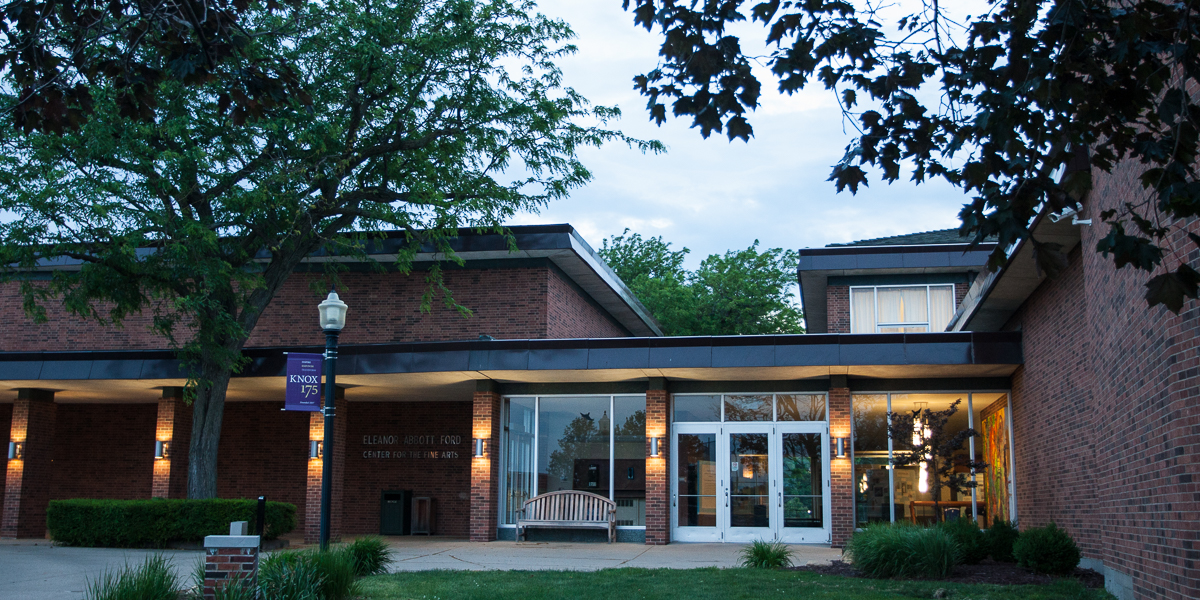

Venture Boldly

Educational Tech at Knox: Old As Dirt, New as Original
Educational Tech at Knox: Old as Dirt, New as Original
By Peter Bailley '74

From ancient times to the present, education has been a showcase for educational technology. The oldest example at Knox would be about 3,000 years old -- a palm-sized cuneiform tablet in the College’s Special Collections and Archives, created in a Mesopotamian school around 1700 BCE. A scholar who examined it stated that the clay bears stylus marks of both student and teacher.
Pictured at right: This cuneiform tablet in Seymour Library is a typical school exercise dating to about 1700 BCE, possibly from Erech, a city in southeastern Iraq. The inscription is a list of cuts of meat, written by a scribe and copied on the other side by a student.
While the teacher-centered lecture method ruled the early years in all subjects at Knox, the founders were tech-savvy 19th-century Yankees. They bought “cabinets and specimens,” models and microscopes, a theodolite to measure angles in the course on surveying, as well as innovative security devices—the tumbler-based Hotchkiss system—to keep the scientific gadgets locked up.
Although language “laboratories” opened in the mid-20th century, well after science labs, they were a tech-based shift in classroom teaching. Starting with tape recorders, and now digital media, introductory-level language drills moved out of the classroom. “It freed up instructional time for development of more communicative activities, more real-life situations and higher-order thinking,” says Jerry Miner, associate professor of modern languages and director of the new, tech-heavy Burkhardt Language Center.
For the first two decades of the late Wilbur Pillsbury’s 40-year Knox career—he came in 1949 to teach accounting and finance—ledger books were hand-written, and high-tech consisted of a room full of adding machines. In 1968, Pillsbury spent a sabbatical at a key institution in what would later be called Silicon Valley— Stanford University—and saw how computers could revolutionize the teaching of accounting. Returning to Knox, “I started developing computer- assisted instruction… [to] eliminate the drudgery and put the emphasis on learning how to learn,” he said in a 1990 newspaper interview.
On the other side of campus, Knox faculty also sought to eliminate drudgery and focus on learning. Traditionally, students of calculus, both high school and college, “did pages and pages of computations,” says Dennis Schneider, professor of mathematics. “Students were taught to memorize procedures for solving equations.” Schneider says many came into his courses having been told, “Here’s an equation, and here’s what you do with it. Don’t ask why, just do it.”
Educators believed that if computers did more computing, students could spend more time on what made calculus interesting. In the late 1960s, the Center for Research in College Instruction in Science and Mathematics (CRICISAM) at the University of Florida developed a new computer-based calculus curriculum. In 1969, mathematics professor Frank Young came back from a CRICISAM institute and launched the course at Knox.
“Exercises required the creation of short computer programs, and computer algorithms were used to illustrate the basic ideas,” says Young, who later went on to chair the computer science program at Rose-Hulman Institute of Technology. “It was definitely not the standard approach.”
The new course revealed technological constraints, which were not unique to Knox. Even short programs required tedious data entry, printed results were slow in coming, and there were virtually no graphics. While the calculus “X” courses, as they were called at Knox, were innovative and engaging, particularly for the strongest students, they did not endure.
Computer-based calculus was not dead, merely delayed until the late 1980s and better infrastructure—more powerful hardware and software, especially the revolutionary program Mathematica. In a single window and in real time, Mathematica combined data entry, calculation, analysis and graphical display of mathematical formulas.

Pictured above: The tech is new, the beard hasn't changed. In 1990, Professor of Mathematics Dennis Schneider posed with two graphics he created using the then-new computer program Mathematica.
Recognizing that Mathematica had fixed much that was wrong with prior calculus software, Schneider began working with the program shortly after it was released in 1988. Today, it is used extensively in Knox’s mathematics curriculum. Instead of doing endless calculations, “students can see immediately whether they’ve done the problem correctly,” he says.
Schneider and Pillsbury became pioneers in their fields. Pillsbury wrote the first textbook in computer-based accounting; Schneider directed workshops and created KnoxPackages, a widely distributed set of Mathematica enhancements. They also understood the limits of technology. Pillsbury scaled back the role of computers when students told him that there were some accounting tasks, like closing the books, that they needed to learn by hand. With computing and graphing handled by Mathematica, there’s more time to grapple with the fundamentals of calculus. Classes are more interesting and more challenging. “Technology should not be a way to be lazy,” Schneider says. “Technology should provide a way to work harder and smarter, to understand more.”
1968
A.B.L.E. (Allied Blacks for Liberty & Equality) was founded.
Open to students of all races, uniting them around common concerns regarding the Black experience